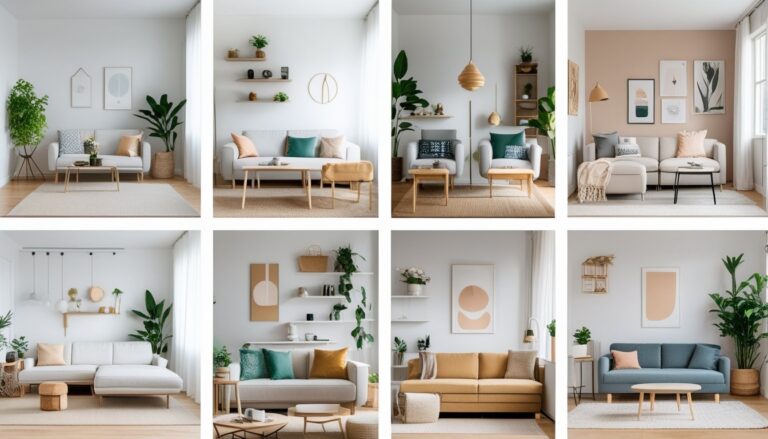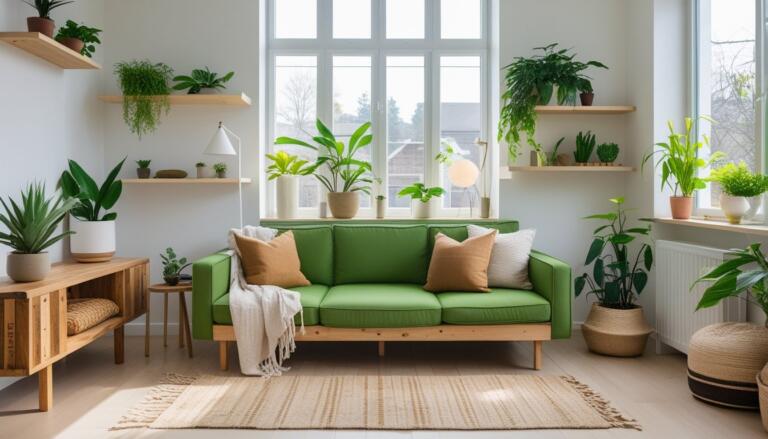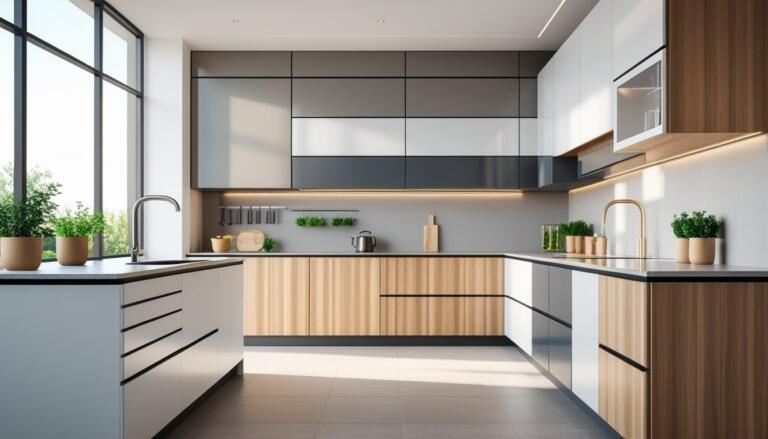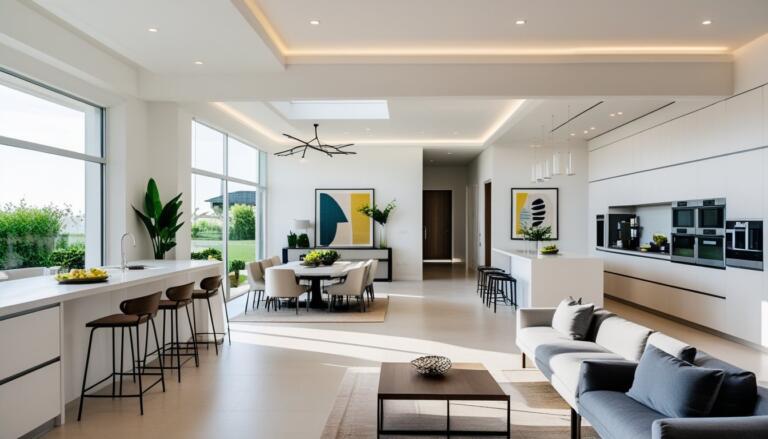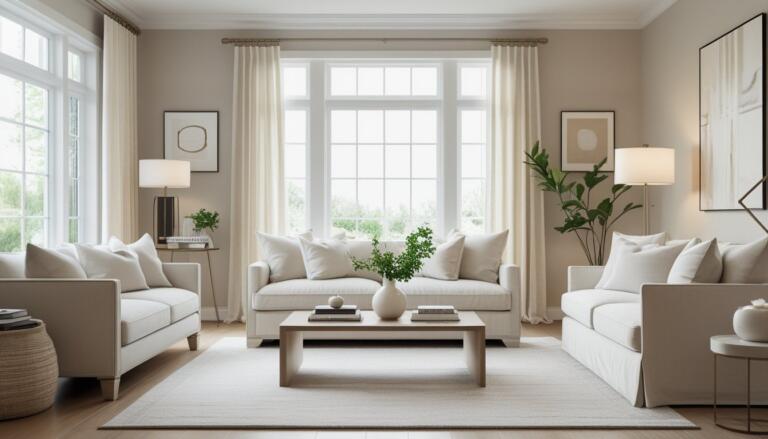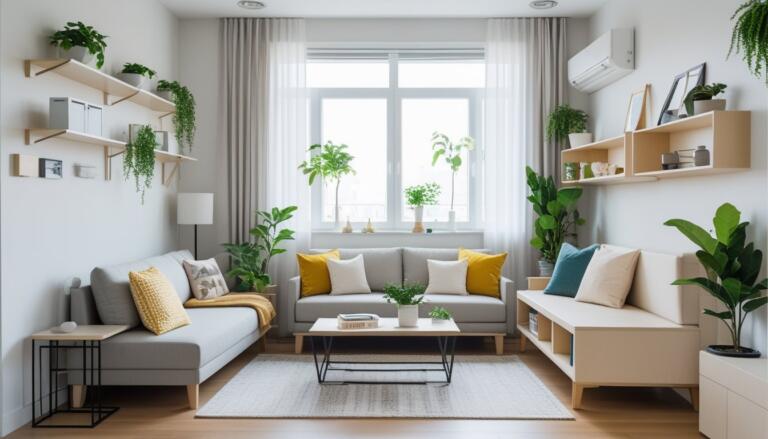7 Home Office Ideas to Maximize Productivity and Comfort
Many people spend a lot of time working from home, so having a well-designed office space is important. A good home office can help reduce distractions, boost focus, and make work more comfortable.
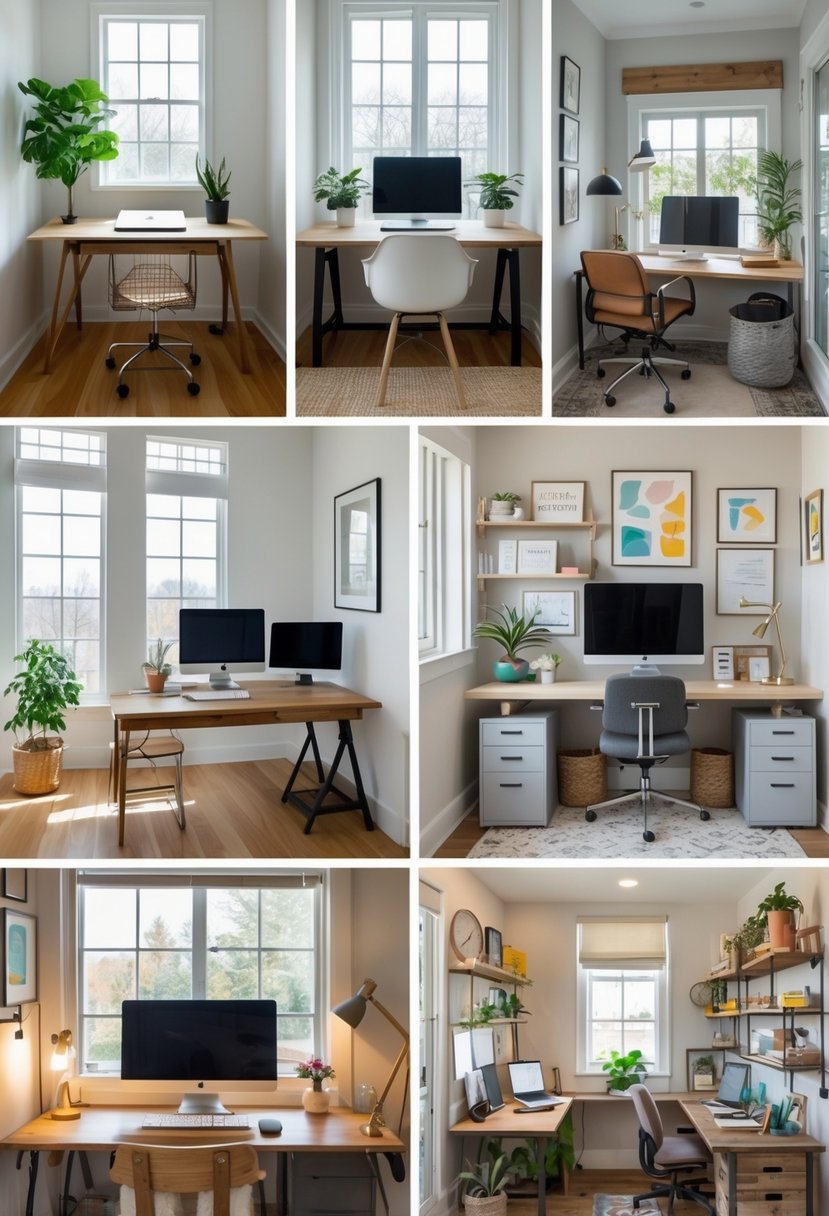
Creating a productive home office involves thoughtful design choices that improve organization, comfort, and motivation. This article explores seven ideas to help anyone build a workspace that supports their needs and helps them work better.
1) Maximize natural light with a desk near a window to boost productivity
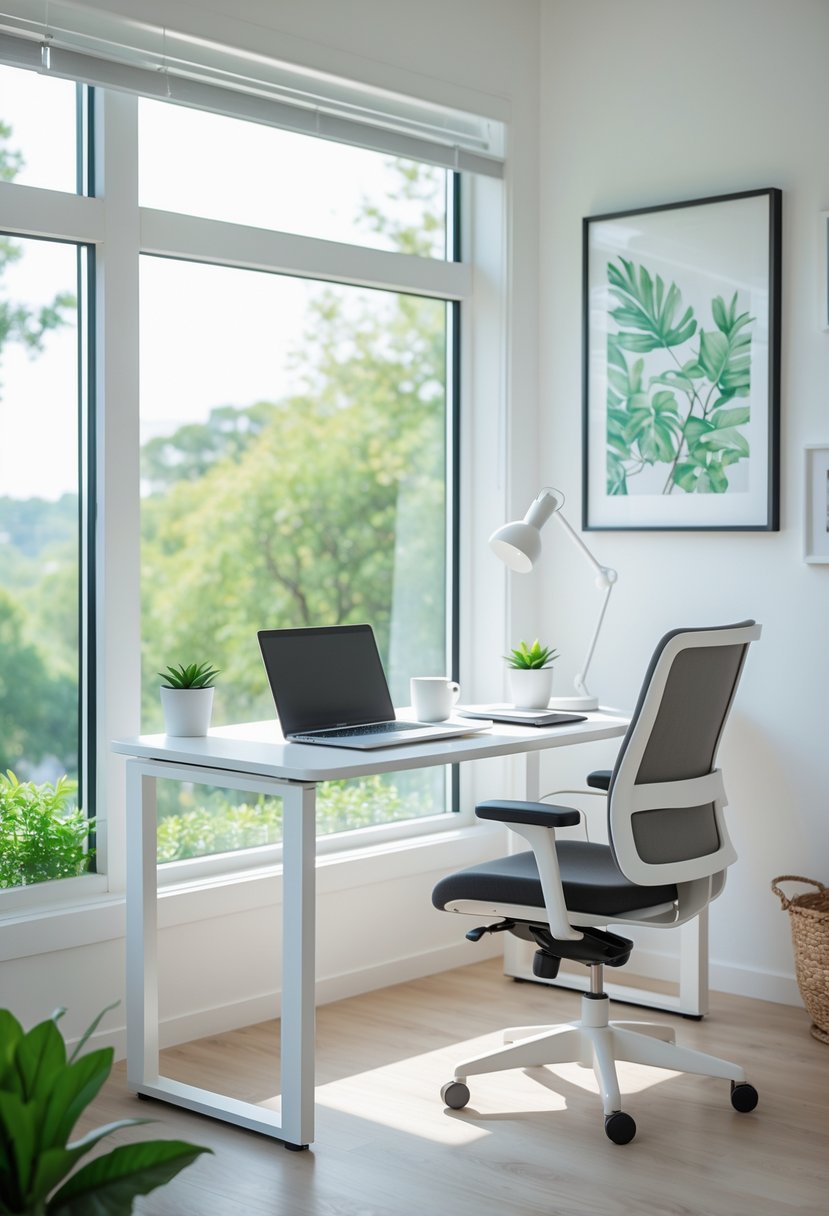
Placing a desk near a window lets natural light brighten the workspace. This can help improve focus and reduce eye strain during work.
Natural light also supports better mood and energy, which can make work feel less tiring. It is important to avoid direct glare on screens by positioning the desk carefully.
Using reflective surfaces or light-colored walls can help spread sunlight further into the room. This creates a more comfortable and productive home office environment.
2) Use ergonomic furniture like the Herman Miller Aeron chair for comfort.
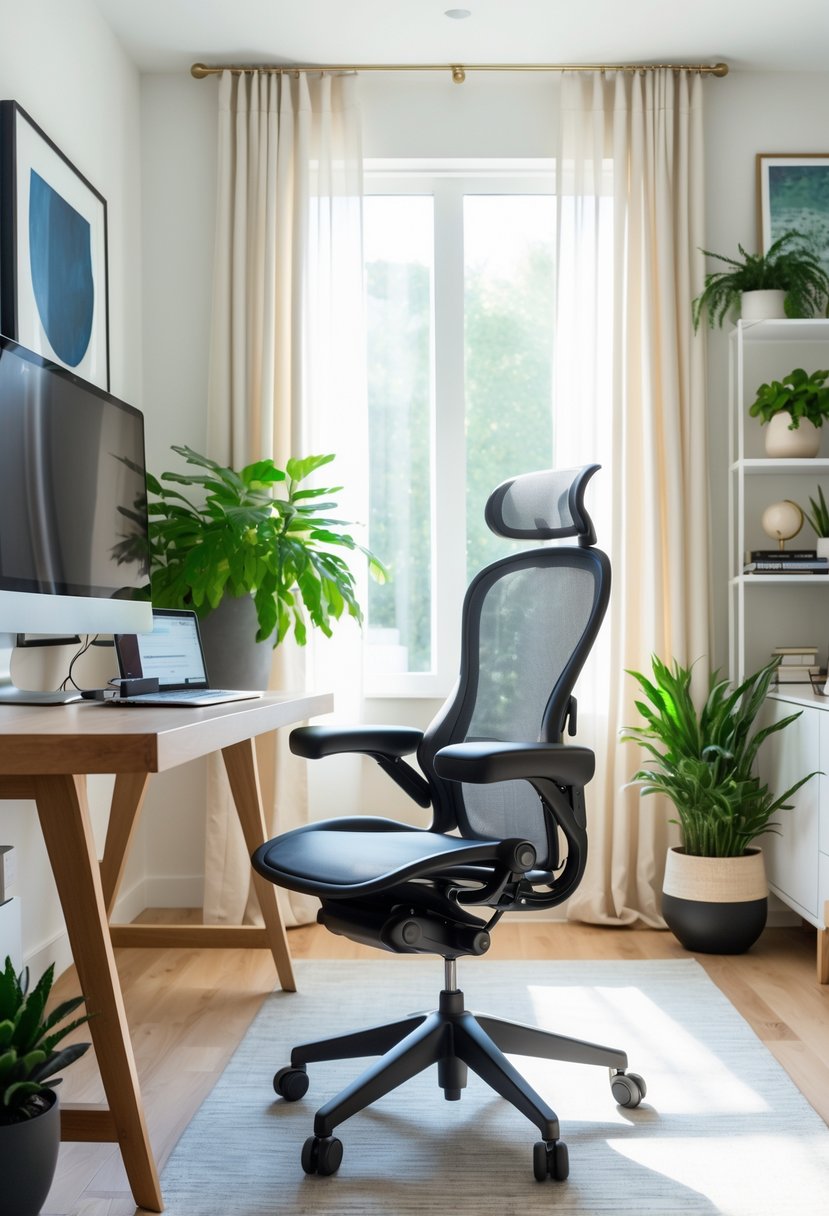
Ergonomic furniture helps reduce strain during long work hours. The Herman Miller Aeron chair is designed to support good posture with adjustable features.
Its mesh material allows better airflow, which keeps users cool. This chair fits many body types and offers lumbar support for the lower back.
Using ergonomic chairs like the Aeron can improve comfort and reduce discomfort while working at home.
3) Incorporate vertical storage such as wall-mounted shelves to save floor space.
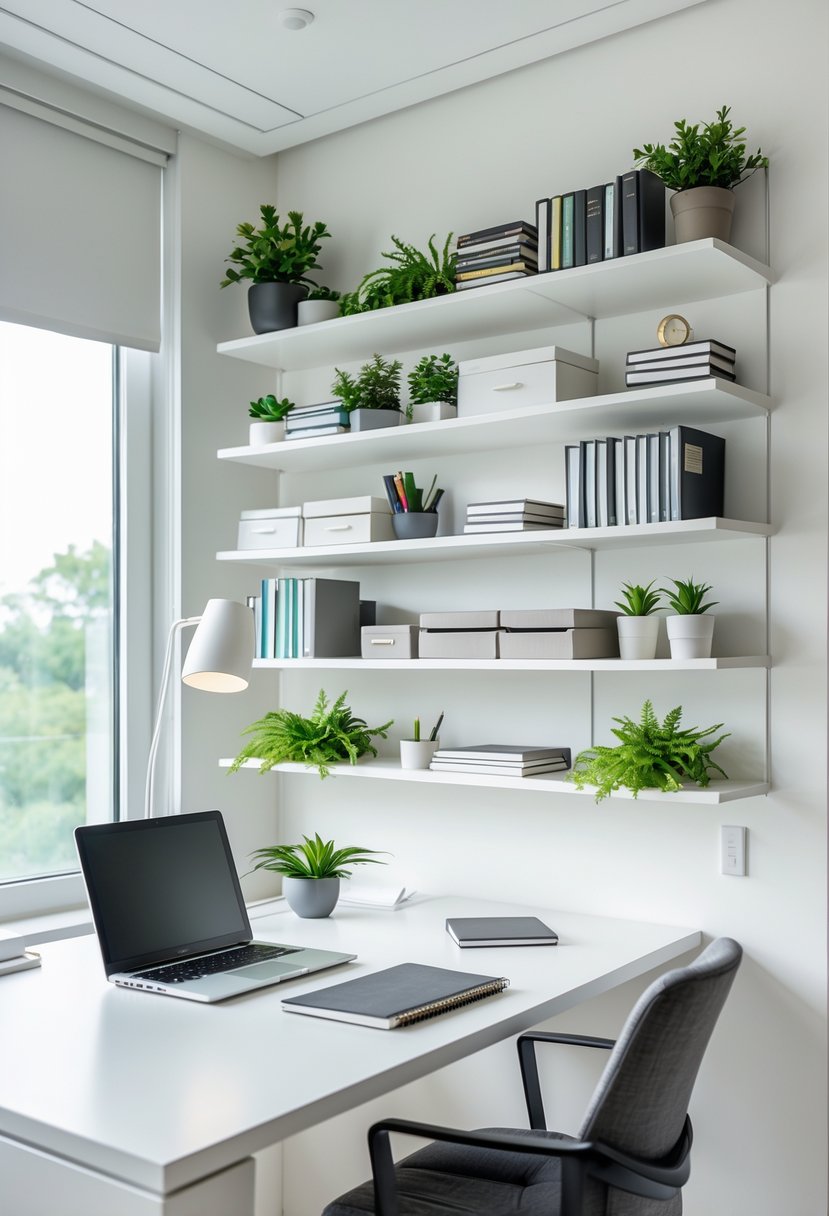
Wall-mounted shelves help keep items off the floor, freeing up valuable space. They also make it easier to organize supplies at eye level, which improves access and visibility.
This storage method works well for books, files, and office tools. It keeps the workspace neat without crowding it.
4) Choose a minimalist color palette to create a calm, focused environment.
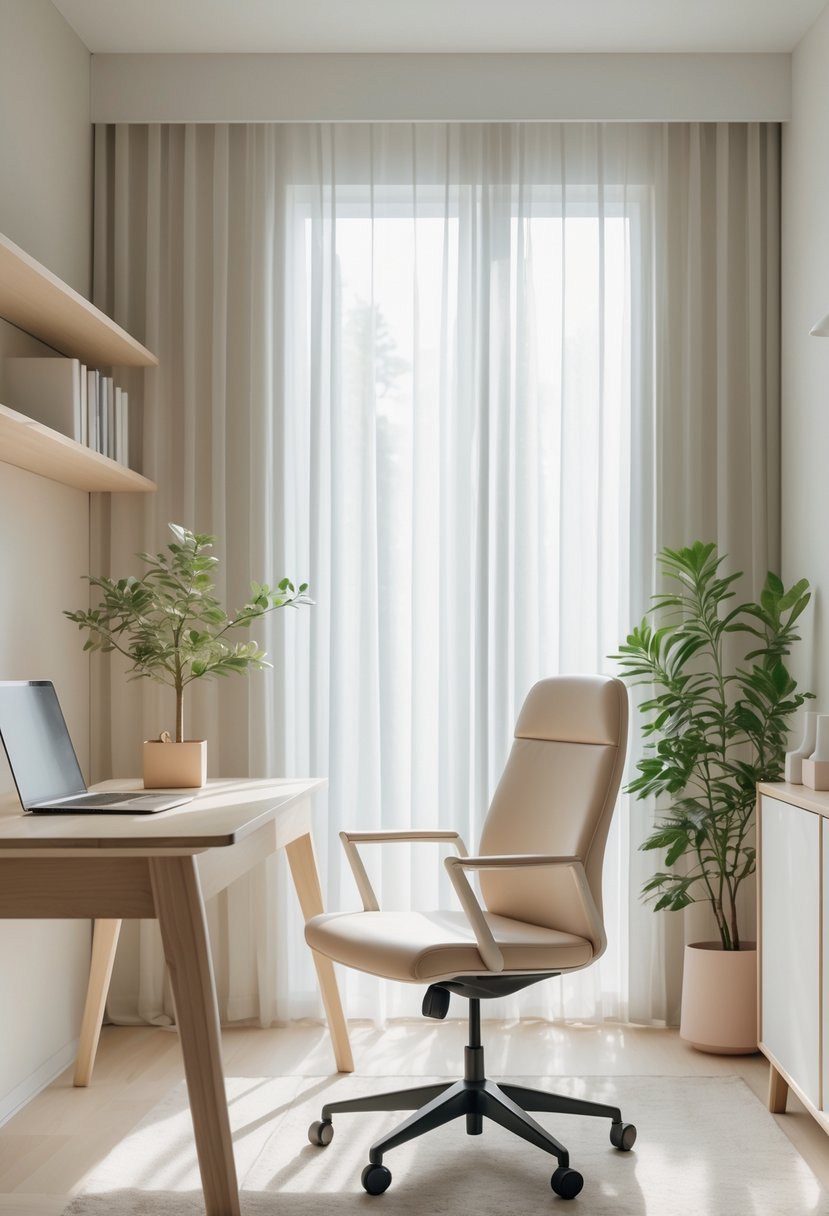
A minimalist color palette uses neutral shades like white, beige, and gray. These colors help reduce distractions and promote calmness.
Soft pastels like mint or lavender can also add a gentle touch without overwhelming the space.
Sticking to simple, muted tones supports focus and makes the home office feel more organized and peaceful.
5) Add greenery with low-maintenance plants like snake plants for better air quality.
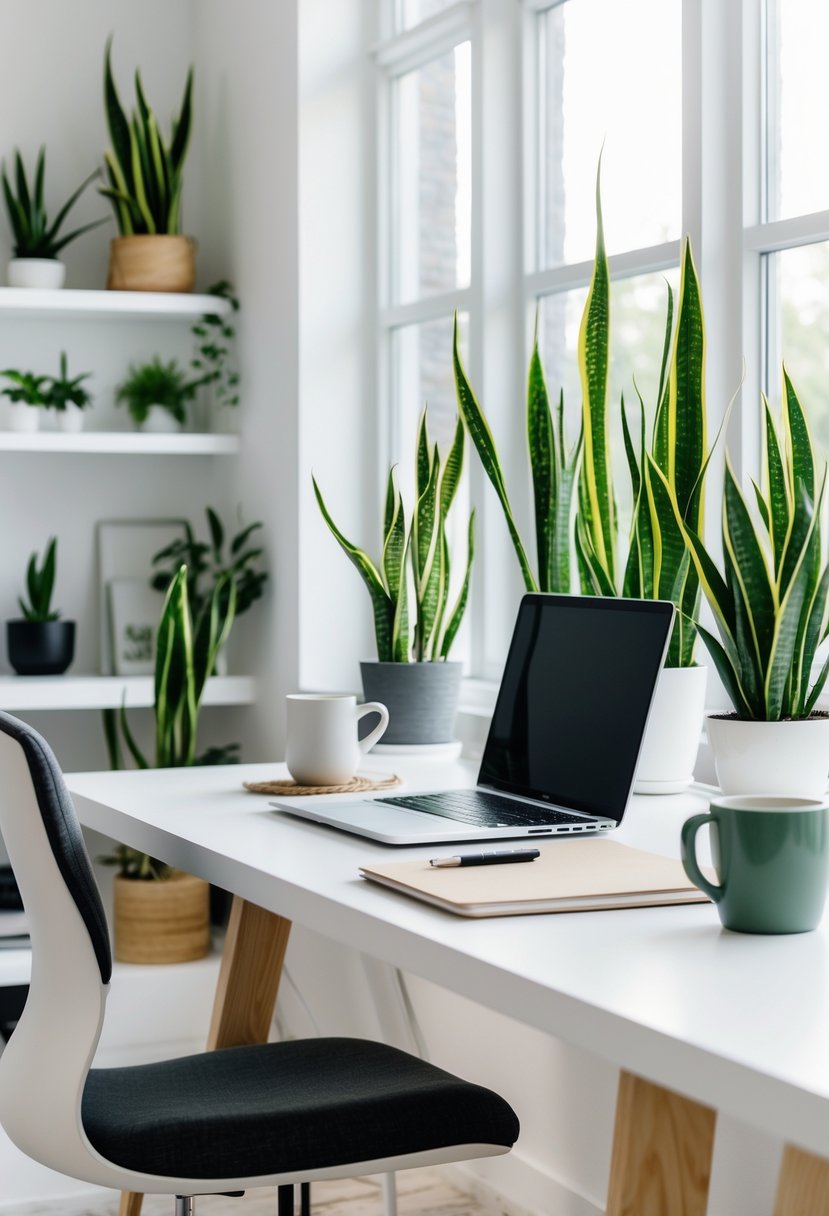
Snake plants are popular for home offices because they need little care. They can thrive in low light and need minimal watering.
These plants help improve air quality by removing common toxins. This can support better focus and a healthier workspace.
Their upright leaves add visual interest without taking up much space. Snake plants are a practical choice for any desk or corner.
6) Use cable management tools to keep wires organized and out of sight.
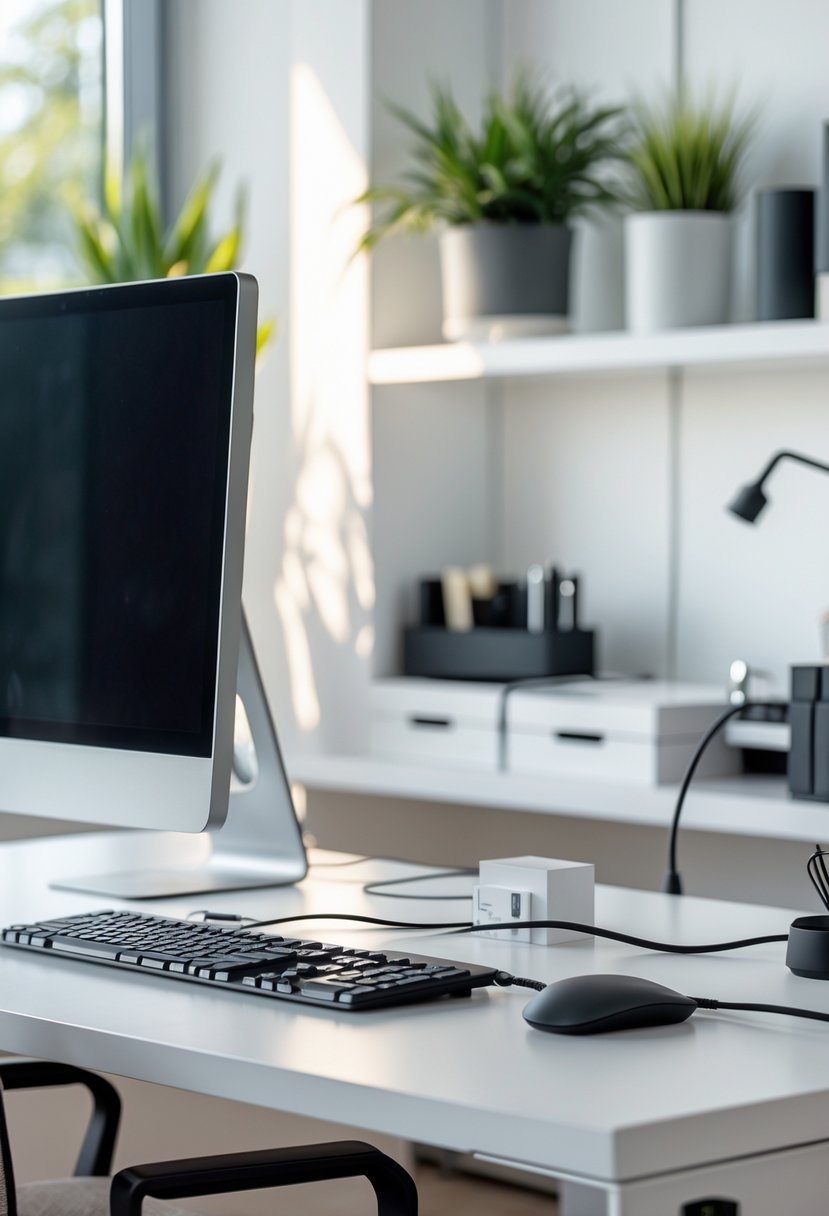
They can use cable clips, ties, and sleeves to keep wires neat and prevent tangles.
Under-desk organizers and adhesive hooks help secure cables and reduce visible clutter.
These tools make the workspace safer and easier to clean. Simple cable management improves the overall look and efficiency of a home office.
7) Utilize multi-functional furniture, such as a desk with built-in drawers, for storage.
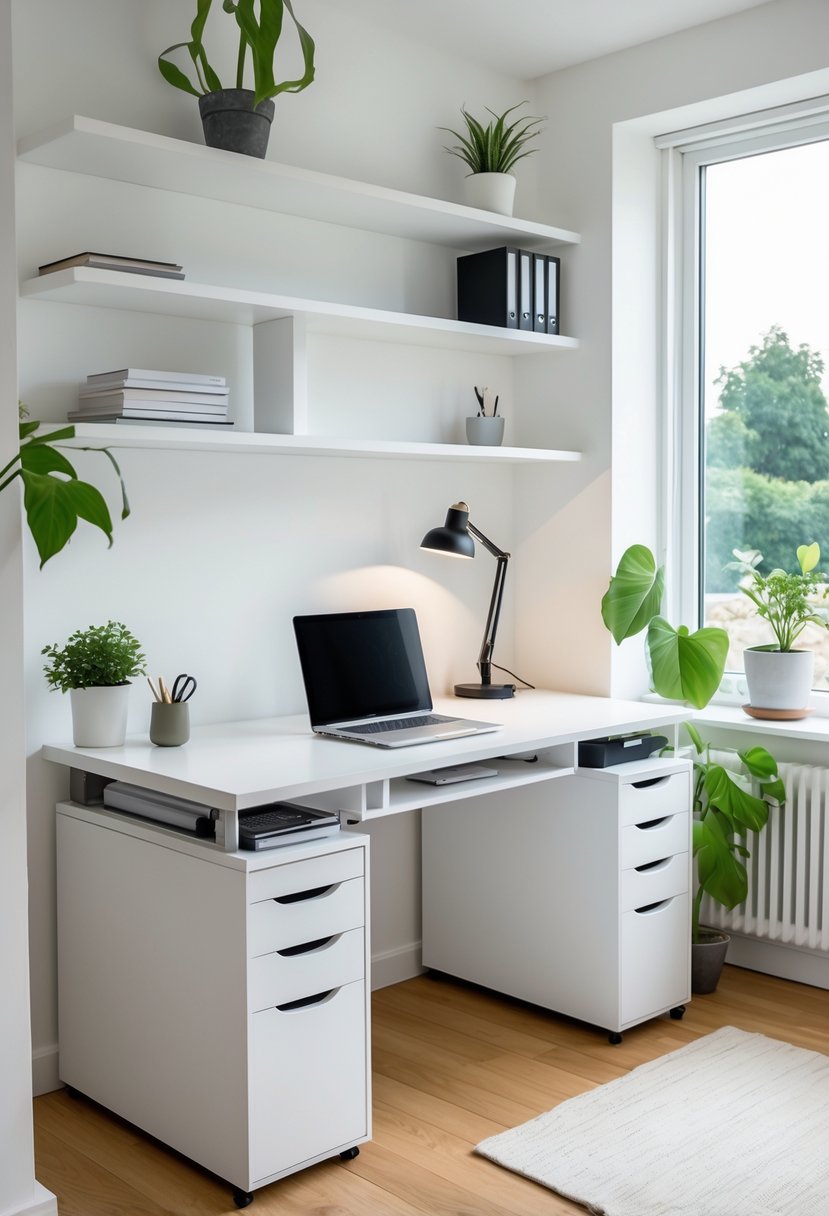
Using multi-functional furniture helps save space and keeps the office organized. A desk with built-in drawers provides easy access to supplies while reducing clutter on the work surface.
Furniture like storage ottomans or foldable tables can serve more than one purpose, making the room flexible for different needs. This approach improves both efficiency and tidiness in a home office.
Design Principles for a Productive Home Office
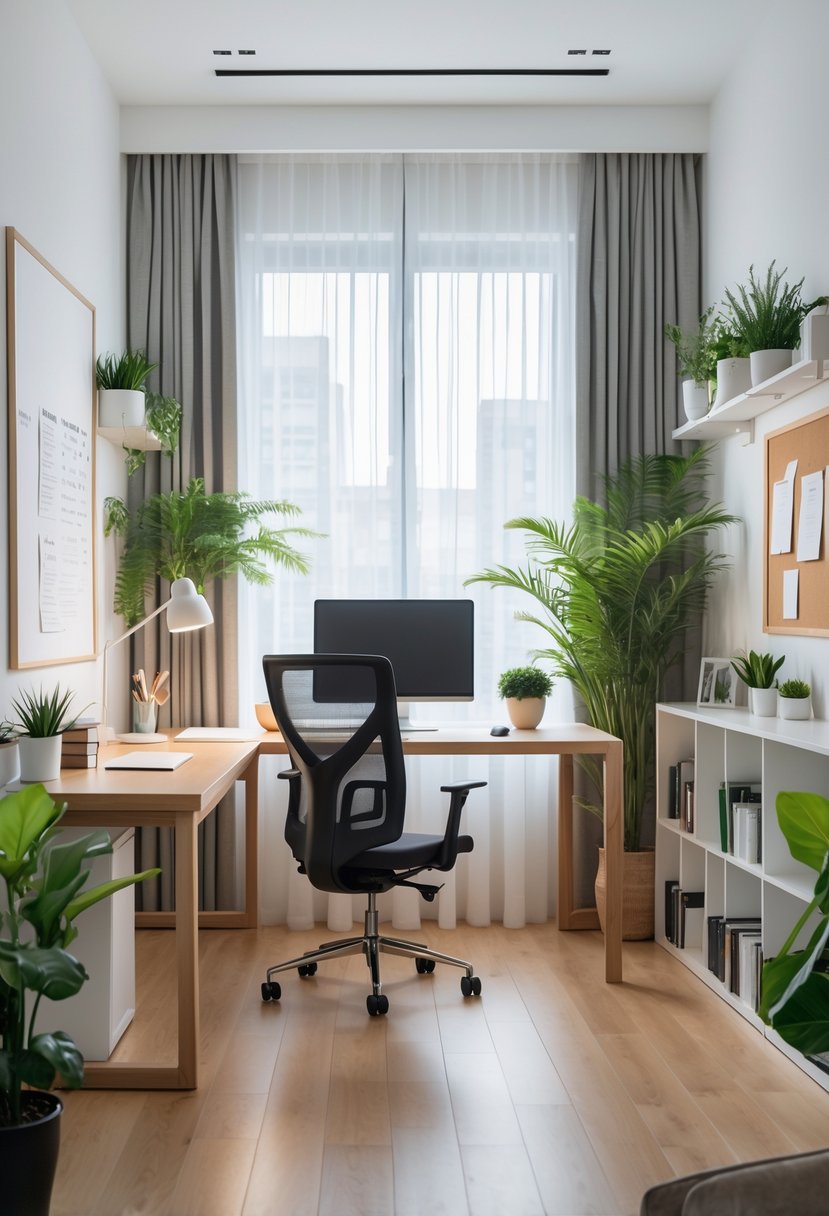
A productive home office depends on creating the right environment. This includes effective lighting and using colors that support focus and calm.
Lighting Strategies
Proper lighting reduces eye strain and keeps energy levels steady. Natural light is the best option, so placing the desk near a window helps.
If natural light is limited, use bright, adjustable LED lights. A combination of ambient and task lighting works well. Use a desk lamp to focus light on work areas without causing glare on screens.
Avoid harsh overhead lights that create shadows or flicker. Dimmable lights give control over brightness throughout the day, matching different tasks and times.
Color Psychology in Workspaces
Colors impact mood and productivity. Light blue and green tones promote calmness and focus, making them ideal for walls or accents.
Yellow stimulates creativity and energy but should be used sparingly to avoid overwhelming the space. Neutral colors like soft gray provide a balanced background without distraction.
Using bold colors, like red, can increase alertness but may also raise stress if overused. Mixing calm and bright tones can create an environment that feels both energizing and comfortable.
Maintaining Focus and Reducing Distractions
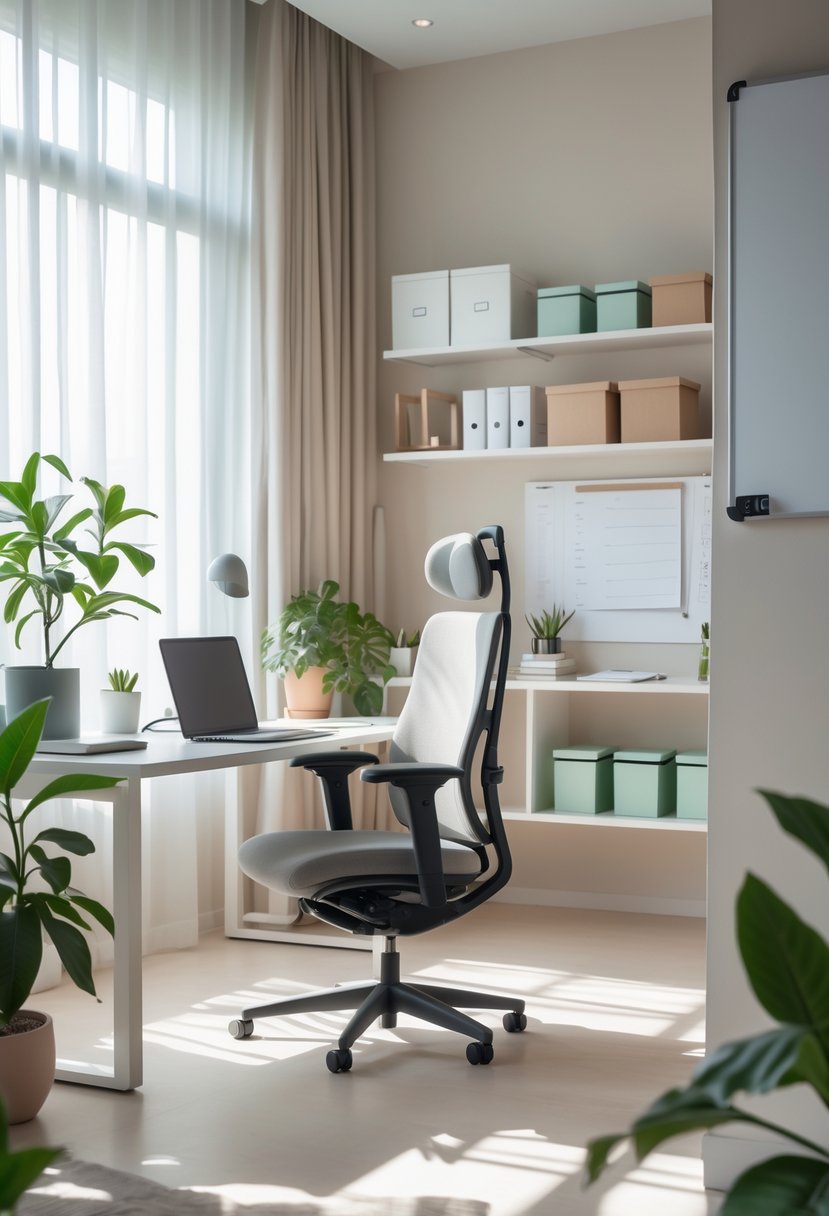
Creating a workspace that limits interruptions and keeps essential items within reach helps improve focus. Small changes to sound control and organization can make a big difference in work efficiency.
Noise Reduction Solutions
Controlling noise in a home office is key to maintaining concentration. Using noise-canceling headphones can block out background sounds like traffic or household activity. Soft materials such as rugs, curtains, and upholstered furniture absorb sound and reduce echo.
Adding acoustic panels to walls can further cut down noise levels. If external noise is unpredictable, a white noise machine or an app that plays steady sounds can help mask distractions. Positioning the desk away from windows or noisy areas also lessens sound interruptions.
Clear boundaries with family or roommates about quiet times can reduce sudden noises. These steps create a calmer setting that supports sustained attention.
Organization and Clutter Control
A tidy workspace helps prevent mental clutter and wasted time looking for items. Using storage solutions such as shelves, drawers, and organizers keeps supplies and documents orderly and easy to access.
Keeping only daily necessities on the desk limits distractions. Digital tools like task lists and calendar apps replace paper clutter and help track work priorities. Regularly clearing the workspace at the end of the day resets focus for the next session.
Labeling storage areas and grouping related items saves time and reduces stress. This approach builds a more efficient and distraction-free environment.

